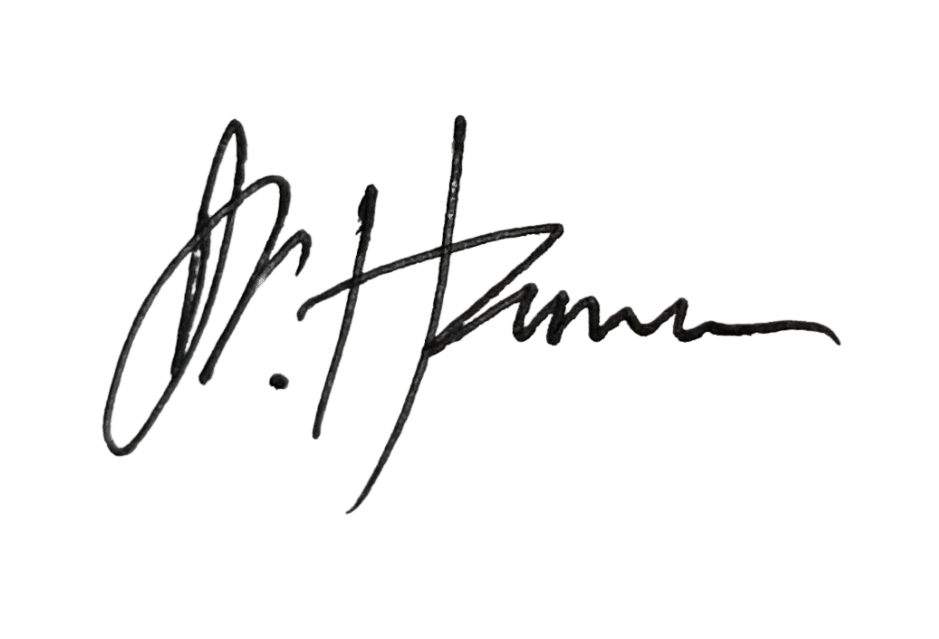Stainless Steel Crowns (Pros & Cons)

I’m sure you’ve seen stainless steel crowns on children’s teeth – You can’t miss them!
They are essential in protecting broken or decayed baby teeth, but they are unsightly. Are they necessary?
Understanding the pros and cons of stainless steel crowns will help you decide if your child needs one.
Recommended Reading: Pediatric Dentistry | The Ultimate GuideNeed Dental Advice? Ask Dr. Hannan!
What Are Stainless Steel Crowns (SSC)?
Stainless steel crowns (SSC) are the most commonly used restorative option for repairing and preserving compromised baby teeth.
Often the remaining tooth structure is fractured or severely damaged. A SSC is necessary for reinforcement. Stainless steel crowns were introduced into pediatric dentistry in 1947 before becoming more popular in 1950.
Stainless steel crowns have outperformed other materials, such as amalgam and composite, in terms of durability and longevity for more than a half-century.
In fact, no restorative material has provided the benefits of low cost, reliability, and durability as the stainless steel crown.
Recommended Reading: What is a Pediatric Dentist? (Read this FIRST)Stainless steel crowns are primarily used on baby teeth because they fit more like a temporary crown.
They don’t fit to form as securely as a more permanent crown. Therefore, they are best used for short-term solutions with the understanding that baby teeth will fall out soon.
In addition, the process is quick and efficient, which is necessary when working with children. However, stainless steel crowns are occasionally used on permanent teeth, specifically first molars if a crown is needed in childhood.
Having a SSC long-term presents many challenges, including gum inflammation and being more prone to cavities.
Are They Necessary?
Because of their many advantages, scientific evidence favors stainless steel crowns as the restoration of choice in young children with high caries risk.
However, using stainless steel crowns is still unpopular among some clinicians because they can be clinically unacceptable if improperly placed.
In addition, although they are easier to set (some clinicians would disagree with this) than amalgam or composite restorations, they have better long-term outcomes.
General dentists rarely use stainless steel crowns.
In fact, the last time I placed a stainless steel crown as a general dentist was in dental school. Most general dentists will refer the child to a pediatric dentist if a SSC is needed.
Did you know pediatric dentists, also known as pedodontists, play an essential role in dentistry? They receive extensive training and education on managing children during dental treatment, including learning sedation dentistry skills.
Recommended Reading: Children’s Cavities (Causes, Treatment & Prevention)Indications
Stainless steel crowns are metal crowns indicated for primary teeth to fix tooth fractures or tooth decay.
Although natural teeth are robust and durable, harmful cavity-causing bacteria can wreak havoc on the enamel surface. This process begins when bacteria congregate and produce a destructive acid.
Next, the acid eats holes in the tooth, starting in the enamel layer, followed by the dentin and pulp layer.
Common indications
- Following pulp therapy (pulpotomy/pulpectomy)
- Moderate to severe cavity
- High-risk cavity patients
- Teeth with developmental defects
- Extensive wear
- Fractured teeth
- Patients with poor oral health
Contraindications
Although stainless steel crowns are a type of dental crown, their purpose serves more like a temporary crown.
Why and how is that possible? Dental crowns prepared for permanent teeth require an impression or digital scan to fit the permanent crown accurately.
In addition, crown fabrication often takes two appointments. Some dental offices use CAD/CAM technology to fabricate ceramic crowns in minutes. However, there are better dental crown options for specific situations.
Common Contraindications
- Primary teeth with extensive root resorption
- Primary tooth approaching exfoliation (6 to 12 months)
- The tooth has excessive mobility
- Patients with nickel allergies and sensitivity
- Lack of cooperation by the patient
What’s Involved?
As mentioned, pediatric dentists are masterfully skilled at comforting a scared child.
They excel at portraying authority to complete dental treatment safely.
The first step involves taking a detailed medical history and performing a thorough physical examination. Next, the pediatric dentist takes x-rays to determine whether the tooth needs additional work before placing the stainless steel crown.
If so, they may recommend other treatments, such as a pulpotomy or pulpectomy, which removes nerve tissue.
After determining the need for a stainless steel crown, the next step is to numb the tooth and surrounding area.
Nitrous oxide (laughing gas) is a safe and effective anxiolytic (calming treatment) to help relax the child.
When the tooth is completely numb, the first step is to remove the cavity. Next, the tooth is trimmed down so the new pre-formed metal crown can fit comfortably between the adjacent teeth.
Primary molar teeth are the most common tooth for stainless steel crowns because they receive the most biting force.
Next, a pre-formed stainless steel crown is selected and crimped so that it snaps into place on top of the baby tooth.
Baby teeth are shaped like cones, with the widest part below the gumline.
This fitting process involves several attempts as the dentist tries it in and out. Lastly, the crown is cemented (glued), and the final fit is confirmed.
Recommended Reading: Pediatric Dental Sedation (Helpful Guide)Post-op instructions
If your child is sedated using IV sedation, general anesthesia, or oral conscious sedation, care will be taken as they come out of sedation.
The pediatric dentist or anesthesiologist will clear them before they can leave the clinic.
Laughing gas, local anesthesia or a combination of both is the most common technique during SSC treatment.
Laughing gas recovery requires breathing 100% oxygen for at least 10 minutes after the procedure. Fortunately, laughing gas is a safe and effective treatment that quickly escapes the lungs and bloodstream.
You must prevent your child from biting on their lip or cheek until the numbness wears off.
Unfortunately, it’s not uncommon for children to be unsupervised and repeatedly bite on their lip, cheek or tongue, causing bleeding and bruising.
Initially, the fit of the SSC will be odd and uncomfortable.
In fact, it’s not uncommon for the tooth to be sensitive for the first 3-5 days. Bleeding around the gumline is also common; if the gum tissue is bleeding after a week, inform your dentist.
In addition, it’s not uncommon for the gum tissue to be purple or irritated. Finally, oral hygiene maintenance is required to keep the area clean and free of harmful bacteria.
What Is the Hall technique?
In 2006, Dr. Norna Hall introduced a quick and non-invasive procedure to arrest cavities, placing the crown without local anesthesia and tooth preparation.
The technique aims to increase the compliance of an anxious child.
Dr. Norna Hall used pre-formed SSC crowns and cemented over active cavities using a glass-ionomer dental cement. The Hall Technique is included in the Scottish Dental Clinical Effectiveness Programme (SDCEP) guideline.
It has helped to drive change in how dentists manage decay in primary teeth. In addition, the less-invasive treatment is effective according to clinical trials.
The Hall technique is a challenging, quick-fix solution to all cavities.
Clinical Significance
Primary teeth are more prone to tooth decay because their enamel is softer, and oral health is neglected.
In addition, primary teeth have larger nerves (pulp) compared to permanent teeth. Within the nerve are “pulp horns” located under the tips of the tooth cusps.
As a result, tooth decay requires more aggressive treatment to prevent the cavity from reaching the nerve tissue. Hence a full-coverage restoration is needed.

Although stainless steel crowns have an aesthetic disadvantage, they are still the treatment of choice for pediatric dentists.
Tooth-colored restorations are readily available in the market; however, they are costly and require more tooth reduction, thereby increasing the chances of pulp exposure.
Key Benefits
- Durability
- Efficiency
- Longevity
- Cost-effectiveness
- Reliability
Oral Health Considerations
According to a recent article, dental caries is the most frequent oral disease of children worldwide, with a prevalence of 1% to 12% in developed countries and up to 70% in underdeveloped nations.
The management of tooth decay in primary teeth is challenging and complex due to the need for behavior management and dental treatments that last until tooth exfoliation.
The SSC is a great solution that addresses both issues.
Studies show pediatric dentists are more likely to restore cavities in primary teeth using stainless steel crowns than general dentists.
However, more training and education is necessary so that general dentist will feel comfortable utilizing this beneficial treatment.
Frequently Asked Questions (FAQ)
My Experience & Expertise
Stainless steel crowns provide an essential function for a badly damaged baby tooth.
Without this pre-formed crown, more baby teeth would have to be extracted, compromising the space for the permanent teeth.
Understanding the pros and cons of a SSC will empower you to make the right choice if your child ever needs one.
Need a second opinion? We can help! Learn more. Knowledge is power when cultivating healthy dental habits. The more informed you are, the better positioned you’ll be to prevent avoidable and potentially costly dental procedures for you and your family. Watch for future blog posts, where we’ll continue sharing important information, product reviews and practical advice!
Sources
- Amlani DV. Stainless Steel Crowns In Primary Dentition. [Updated 2022 Sep 12]. In: StatPearls [Internet]. Treasure Island (FL): StatPearls Publishing; 2022.
- Threlfall AG. General dental practitioners’ views on the use of stainless steel crowns to restore primary molars. Br Dent J. 2005.
- Santamaria RM. Caries management strategies for primary molars: 1-yr randomized control trial results. J Dent Res. 2014.

About the Author
Dr. Matthew Hannan, also known as “Dr. Advocate,” is a board-certified dentist on a mission to provide accurate dental patient education. He attended Baylor University before completing dental school at UT Health San Antonio School of Dentistry. He now lives in Arizona with his beautiful wife and 4 kids. Dr. Hannan believes everyone should access easy-to-read dental resources with relevant, up-to-date dental research and insight to improve their oral health.

Connect with Dr. Hannan!

Philips Sonicare 6100 Electric Toothbrush Review 2024
As soon as I received the Philips Sonicare 6100 electric toothbrush, I was immediately taken in by the sleek, well-designed packaging, signaling a high-quality product. Philips has put a lot of thought into the user experience right from the moment of unboxing.

Sonicare 7500 Electric Toothbrush Review 2024
Tired of battling stubborn plaque and seeking a brighter smile, despite regular brushing? Meet the Philips Sonicare 7500, an electric toothbrush designed to tackle these common dental woes head-on, promising to take your oral hygiene routine to the next level.

EnergyIC Kids Electric Toothbrush Review 2024
As a dentist and a parent, I’ve faced the challenge of getting my one-year-old to brush his teeth. That changed when we tried the EnergyIC Kids Electric Toothbrush. With its easy-to-hold design, gentle vibrations, and anti-choke ring, it’s turned brushing from a struggle to a joy.
Gain Clarity with Our FREE Second Opinion Guide
Receive clear, expert second opinions online within 48 hours. Start today!
Product Reviews
Our 250+ dental product reviews (and counting), curated by an experienced dentist, are the most comprehensive online.
Toothbrush Genie
State-of-the-art chatbot designed to help you discover your perfect toothbrush in just a few simple steps!
Cavity Risk Assessment
Cutting-edge digital tool designed to evaluate your individual cavity risk based on your responses to a series of questions.
Gum Disease Assessment
Discover your gum disease risk with our quick and engaging 6-question assessment!


